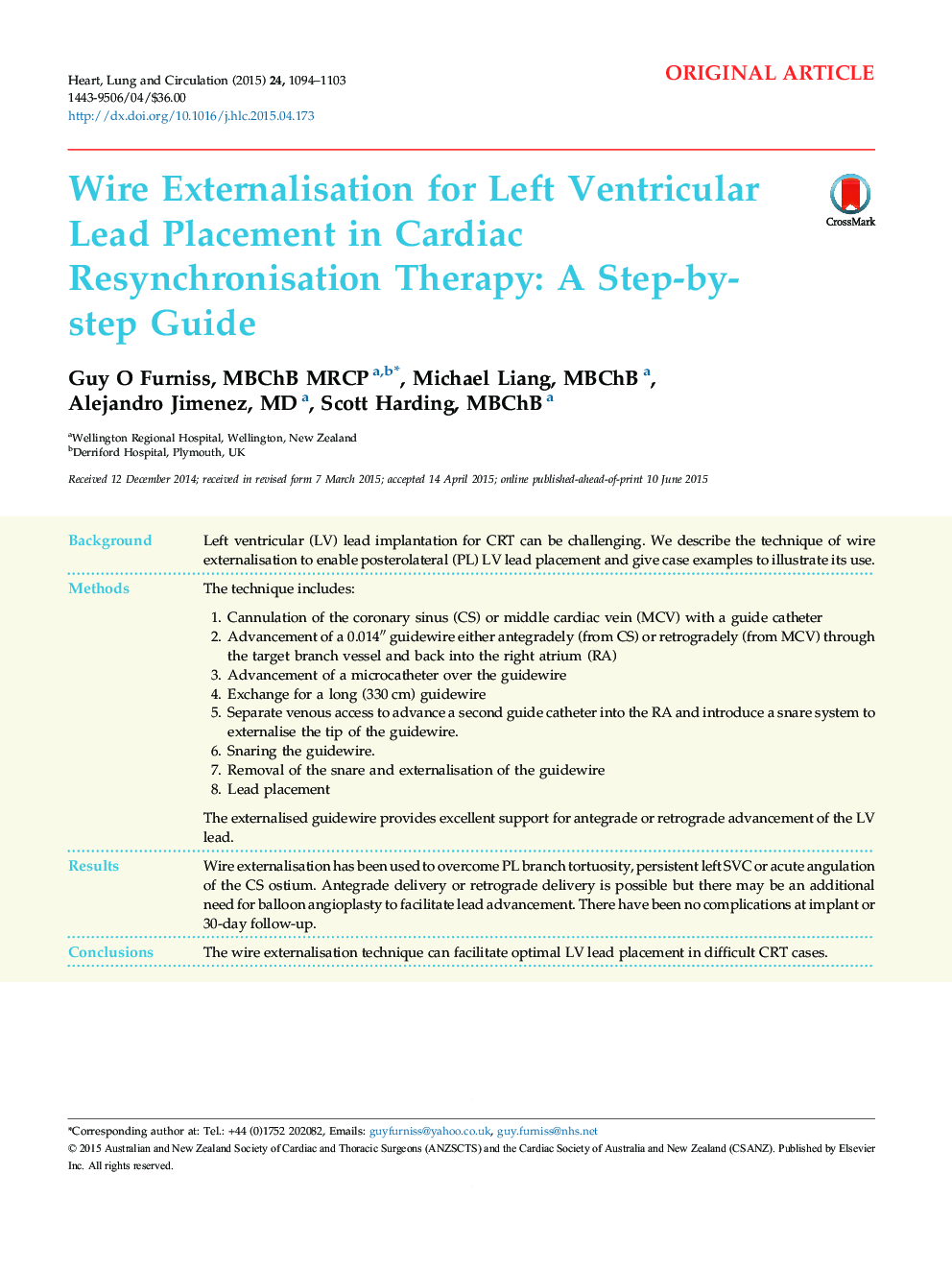| Article ID | Journal | Published Year | Pages | File Type |
|---|---|---|---|---|
| 2917384 | Heart, Lung and Circulation | 2015 | 10 Pages |
BackgroundLeft ventricular (LV) lead implantation for CRT can be challenging. We describe the technique of wire externalisation to enable posterolateral (PL) LV lead placement and give case examples to illustrate its use.MethodsThe technique includes:1.Cannulation of the coronary sinus (CS) or middle cardiac vein (MCV) with a guide catheter2.Advancement of a 0.014″ guidewire either antegradely (from CS) or retrogradely (from MCV) through the target branch vessel and back into the right atrium (RA)3.Advancement of a microcatheter over the guidewire4.Exchange for a long (330 cm) guidewire5.Separate venous access to advance a second guide catheter into the RA and introduce a snare system to externalise the tip of the guidewire.6.Snaring the guidewire.7.Removal of the snare and externalisation of the guidewire8.Lead placementThe externalised guidewire provides excellent support for antegrade or retrograde advancement of the LV lead.ResultsWire externalisation has been used to overcome PL branch tortuosity, persistent left SVC or acute angulation of the CS ostium. Antegrade delivery or retrograde delivery is possible but there may be an additional need for balloon angioplasty to facilitate lead advancement. There have been no complications at implant or 30-day follow-up.ConclusionsThe wire externalisation technique can facilitate optimal LV lead placement in difficult CRT cases.
